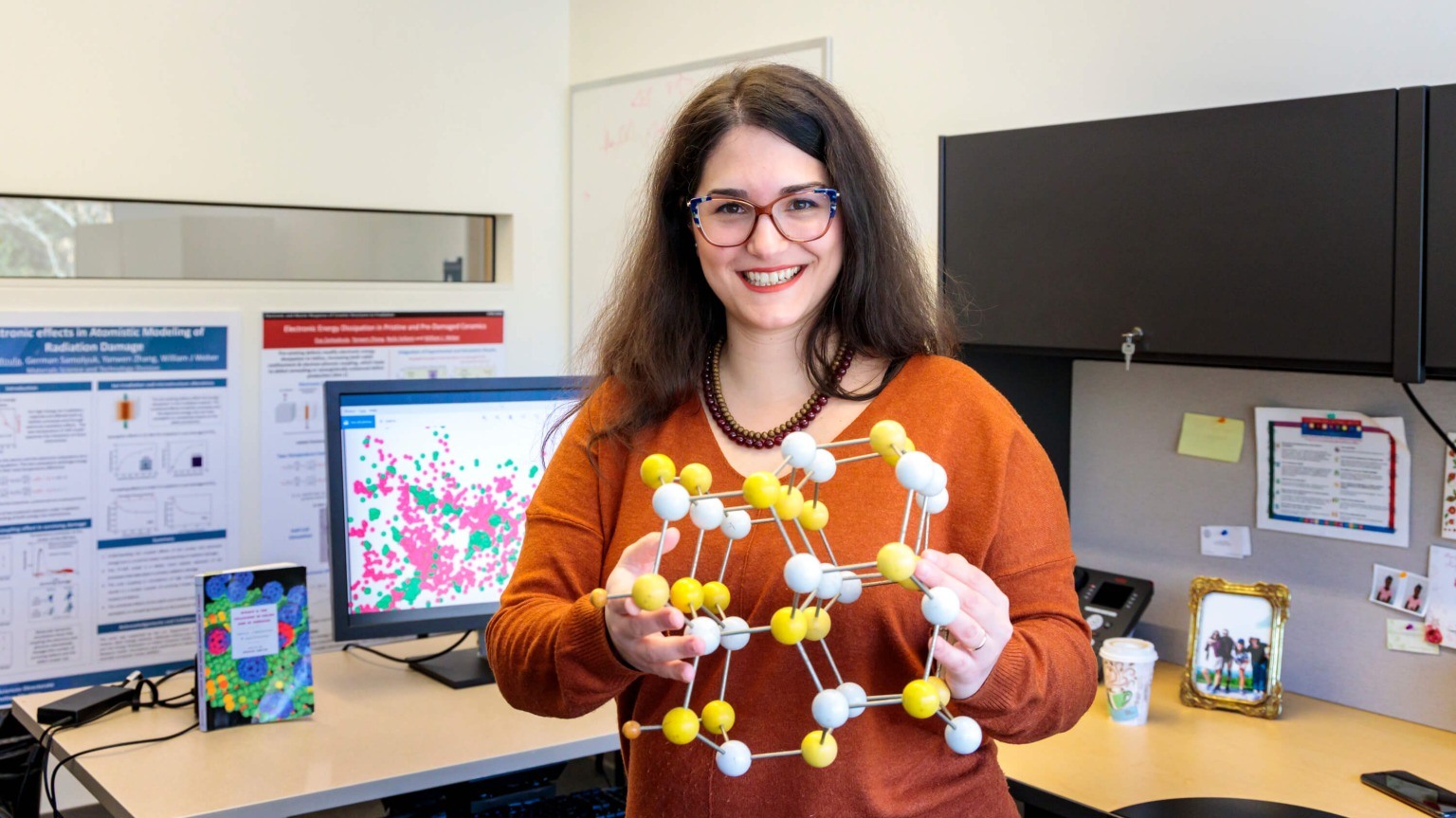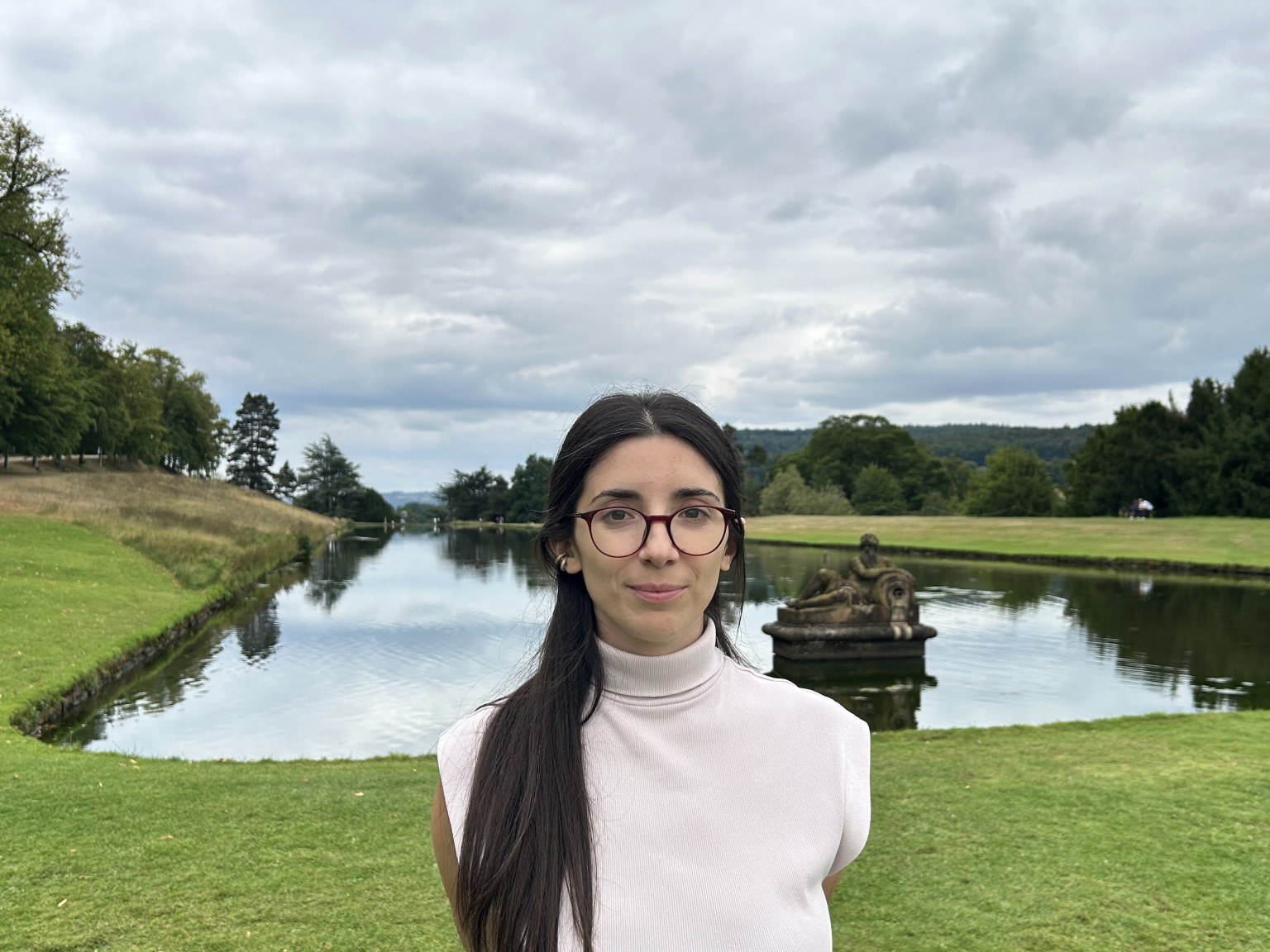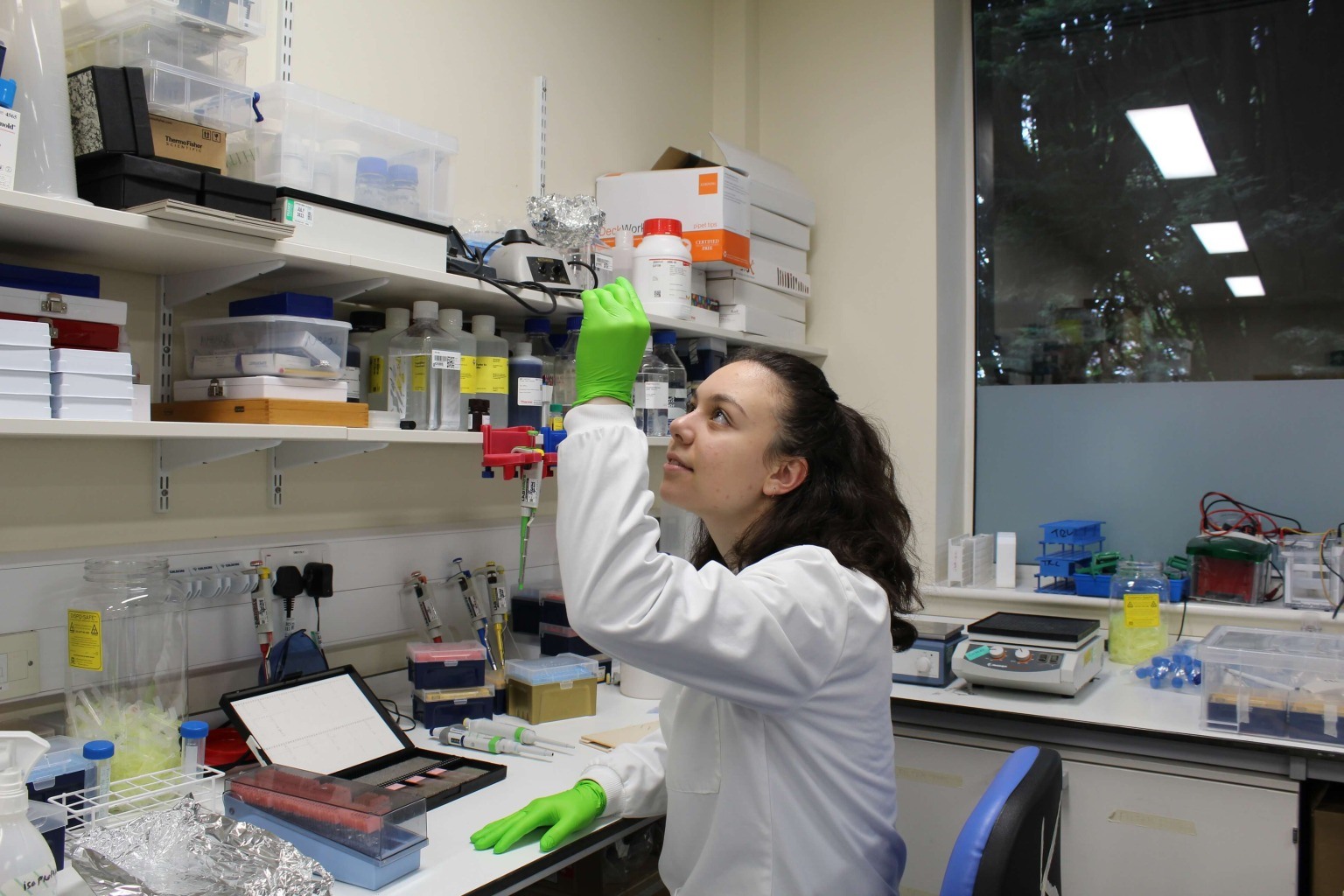
Exploring the invisible: Dr. Ariadni Boziki simulates the molecular world
Chrysovalantou Kalaitzidou

Magazine / Interviews , Engineering
Dr. Eva Zarkadoula is a physicist working as a Research and Development Staff Scientist at the Oak Ridge National Laboratory (ORNL) in Oak Ridge, Tennessee. Originally from Kesariani, she studied physics in Athens and completed her PhD in Physics at the Queen Mary University of London in the UK. In 2014, she moved to the USA in order to work for the Materials Science and Technology division of ORNL. Since then, she has been trying to understand the mysteries of materials and to contribute to a greener future by studying the behavior of materials in the extreme conditions of nuclear reactors. Today, she talks to Greek Women in STEM about her work and her life at ORNL and in Tennessee.
Can you give us an overview of your work and your scientific field more generally?
I am a physicist working in the field of materials science. I have worked the longest on materials in extreme conditions and ion-matter interactions, with applications in material modification, material design, nuclear environments, and semiconductors, to name some. I have additionally been working toward understanding the mechanical properties of alloys (such as strength and hardness) in relation to their microstructure. Finally, I study the behaviour and properties of liquids and metallic glasses on the atomic level. Understanding material behaviour and microstructure is crucial for controlling its performance and ultimately designing materials with improved characteristics.
Some of your latest work has been on piezoelectric materials. What are these materials, and why are they important?
Piezoelectric materials are materials that have the ability to generate an electric charge when pressure (or mechanical stress) is applied to them, and vice versa. They can be crystals, such as quartz, ceramics, such as aluminum nitride (AlN), or polymers, such as polyvinylidene fluoride (PVDF). A very common piezoelectric is sugar cane!
Piezoelectric materials are very useful in sensor technologies and devices, for example, for fire alarms, carbon monoxide detectors, and sensors in nuclear power plants. Changes in pressure and temperature in these sensors, or damage due to irradiation, alter the piezoelectric material’s microstructure and produce electrical charges. These charges are collected with the help of a circuit and can be then analyzed or can trigger an alarm, depending on the application.
You recently published a study on the damage caused to sensors in nuclear reactors by irradiation. Could you tell us a bit more about this study? What was the main question you set out to answer, and how did you tackle this question?
Piezoelectric sensors in nuclear reactor environments are subject to extreme conditions of high temperatures, stresses, and radiation, which damage the sensors. As a result, their functionality is degraded, and they need to be replaced, which is time-consuming and costly. This study focused on understanding how the damage affects the functionality of sensing materials and on investigating new material compositions that can withstand these harsh conditions while maintaining their functionality. We employed both experiment and modelling to address these questions. Experiments included ion irradiation, analysis of the irradiation-induced damage in the samples, analysis of the samples' piezoelectric response, and synthesis of new compositions. Additionally, in order to understand the material behaviour in very short length scales not accessible by experiment, we used modelling of the behaviour of the atoms with molecular dynamics and ab initio calculations. One of the things we looked into is how AlN doped with scandium (Sc), a composition with better piezoelectric response compared to undopped AIN, affects the material’s response to ion irradiation. Our findings show that Sc-doped AlN is a promising material composition for sensors in radiation environments, a finding that can accelerate the design of sensor materials able to perform for longer periods of time in extreme conditions of radiation.
Having grown up in Athens and lived in London for three years, it took me some time to get used to the slower pace of life, away from a big city. But very quickly, I reconnected with nature.
What are some important recent advances in your field that you find fascinating and why? What do you still hope to be achieved or achieve yourself?
Research for advancing nuclear power is ongoing at the international level. Examples of recent technological advances in nuclear energy include 3D-printed parts manufactured at ORNL and used by the Tennessee Valley Authority in a nuclear power plant in Alabama; the industry’s first nuclear 100% accident-tolerant fuel assembly by Framatom; and the strongest fusion magnet in the world designed in an MIT project.
It is clear that our future depends on clean energy, such as solar, wind, and nuclear energy. Fusion power is a safe, clean energy form of nuclear power. Fusion in nature exists in stars like our Sun, in extremely high temperatures. Recreating on Earth processes that happen in stars is no easy job. In order to make fusion power a reality, we need to design new, improved materials, able to withstand the extreme conditions of fusion, such as very high temperatures. I wish to keep supporting the efforts for fusion power through my research, as it is an energy source with great potential for humanity. I believe that understanding material response and behaviour in the extreme conditions of nuclear environments is very exciting.
You have been working for many years now in the Oak Ridge National Laboratory in Tennessee. Was it difficult to get your position there and get settled in Tennessee? How is it to live and work there?
Settling in Tennessee was definitely very interesting and an adventure, as my husband and I were discovering the differences from our home countries. Having grown up in Athens and lived in London for three years, it took me some time to get used to the slower pace of life, away from a big city. But very quickly, I reconnected with nature. East Tennessee is very green! I see deer and wild turkeys on the way to work, and we feed birds, squirrels, and rabbits on our own patio at home. I will never forget the awe my husband and I felt when driving through the Appalachian Mountains a few weeks after moving here.
Working at Oak Ridge National Laboratory is also a great experience. It is a large organization, with an emphasis on collaboration and teamwork, and with state-of-the-art technology and facilities. It is a great place for a researcher to learn and progress their career, as well as develop interpersonal and leadership skills. In addition to my research duties, I am involved in several groups, such as the ORNL Women's Alliance Council of which I am president this year.
What or who has helped you in your path so far, and how?
I have always been supported unconditionally by my family: my parents, siblings, and later on, my husband. They have always believed in me and encouraged my decisions. Also, I have been very lucky to come across people in my path with whom I built strong, trusting, and honest connections. I still reach out to some of them for advice. I must also mention that something I live by is not comparing myself to others. I believe that everyone has their own unique path, and this is something that I frequently emphasise to other people.
Keep in touch with Eva via LinkedIn.

Chrysovalantou Kalaitzidou

Thaleia-Dimitra Doudali

Danai Korre
